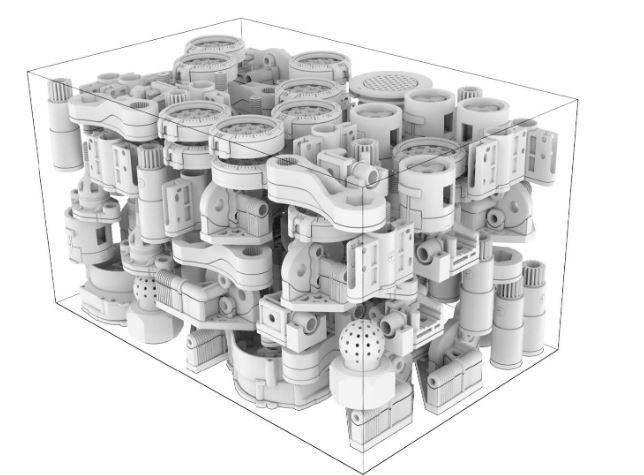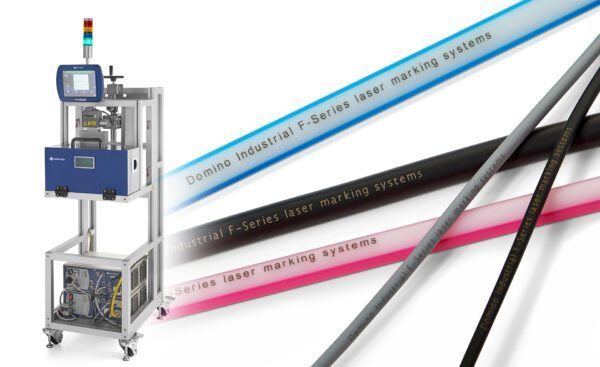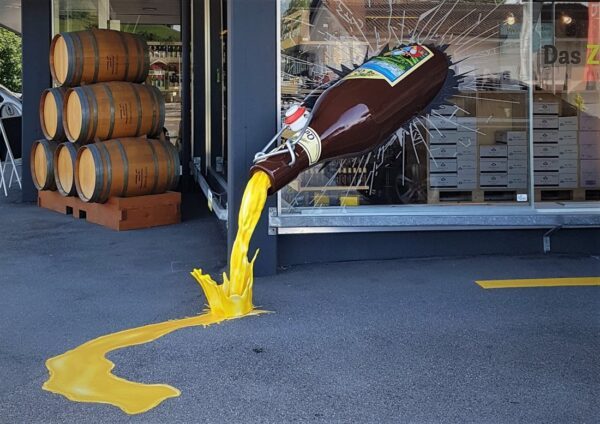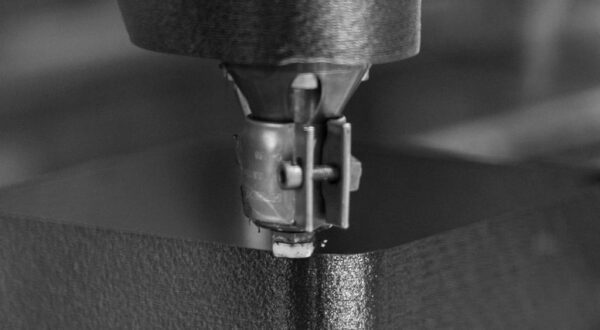Metal Binder Jetting is an advanced additive manufacturing technology that is gaining traction in the manufacturing industry due to its ability to create complex and precise metal parts. Unlike other methods of 3D metal printing, such as selective laser melting (SLM) or electron beam melting (EBM), where metal powder is melted layer by layer by a heat source, metal binder jetting uses a binder to bond the metal powder. One of the main advantages of metal binder jetting is its speed. As the binder is applied to the entire powder bed via a wide print head, the process is much faster than techniques such as SLM or EBM, where the energy source has to move step by step over the powder bed. Additionally, Metal Binder Jetting allows for greater design freedom and flexibility as it enables more complex geometries without the need for support structures that are often required with SLM and EBM. Furthermore, it is able to create parts with internal structures or components that are difficult to machine with traditional and other additive manufacturing methods.
Despite its apparent simplicity, metal binder jetting represents a significant advance in manufacturing technology and expands the possibilities in many industries.
The printing process
Preparation of the CAD model
The process begins with a digital 3D model that is created in a CAD (computer-aided design) program. This model is then broken down into very thin layers, usually between 20 and 100 micrometers thick, to give the printer a guide.
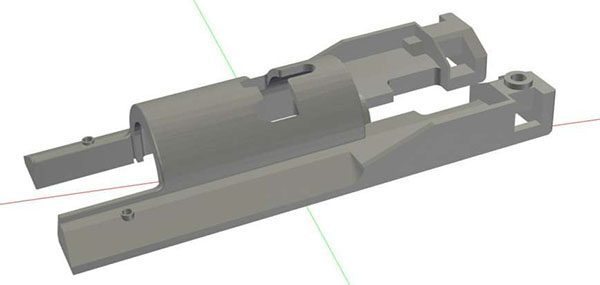
Powder coating
The printer begins the process by applying a thin layer of metal powder to the build platform. The thickness of the layer corresponds to the thickness of the slices in the digital model.
Application of the binder
Next, a print head moves over the powder layer and selectively ejects a liquid bonding agent. This binder "glues" the metal particles together according to the pattern specified by the CAD model. Areas where the binder is not applied remain as loose powder.
Layer-by-layer process
The build platform then lowers by one layer thickness and a new layer of metal powder is applied. The print head applies the binder to the new layer and bonds it to the layer below. This process is repeated layer by layer until the entire part is printed.
Refinement of the MBJ process for maximum efficiency
In traditional metal 3D printing, binder jetting methods often require separate passes for the application of powder and binder. In this process, a layer of metal powder is sprinkled onto a build platform and then the print head is moved over the powder to selectively deposit the binder. This selective deposition fuses the metal powder particles together to form the design of the part.
However, recent technological advances have led to a further development of this approach. Innovative technologies such as Single Pass Jetting (SPJ) from manufacturer Desktop Metal have significantly increased the speed and efficiency of 3D printing metal parts. With this technique, powder and binder are applied simultaneously in a single pass, creating a more streamlined process.
A key feature of the SPJ process is the use of a counter-rotating roller that distributes and compacts the metal powder on the build platform. As the roller does its work, the print head moves in the opposite direction, causing the binder to be applied and the metal powder particles to fuse together.
In addition to these innovations, some modern 3D printers have an integrated drying mechanism in the print head. This mechanism dries the binder immediately after application, strengthening the resulting "green" part and ensuring exceptional dimensional accuracy.
Technologies such as SPJ have pushed the boundaries of what is possible in metal 3D printing, enabling two-dimensional (2D) printing speeds of up to 12,000 cm²/s. This improvement represents a significant leap over traditional binder jetting processes and enables the mass production of high-quality, complex metal parts faster and more efficiently than ever before.
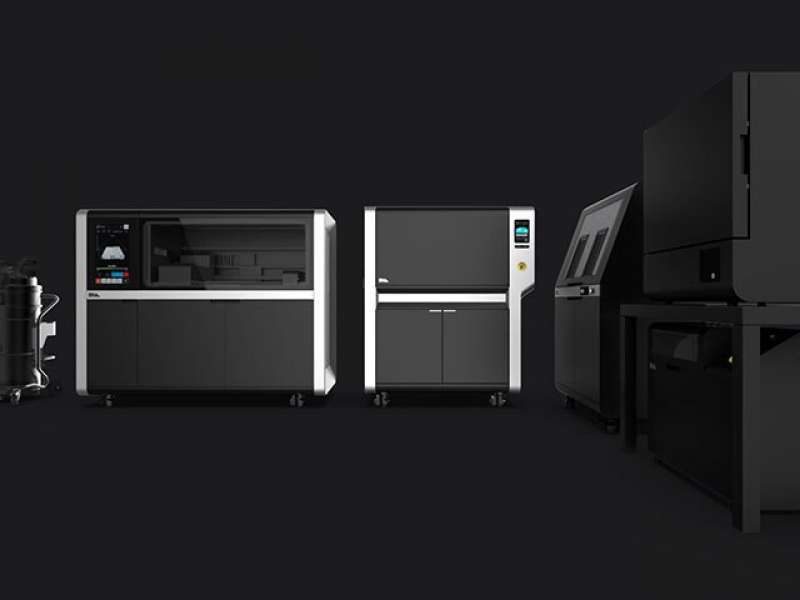
Post-processing
After the printing process, the "green" part goes through critical post-processing stages, including debinding and sintering. During debinding, the "green" part is heated to gradually remove most of the binder, resulting in a firmer but somewhat porous "brown" part. This "brown" part is then sent to sintering, where it is heated to just below the melting point of the metal powder. This heat causes the metal particles to bond together, further compacting the part and increasing its strength.
Binder Jetting 3D printers from certain manufacturers, such as Desktop Metal, use sophisticated software to ensure a successful sintering process. This software predicts the shrinkage and deformation of the part during sintering and compensates for it during the printing process. This compensation, known as "pre-distortion", allows the part to reach its correct final dimensions after sintering, despite the high temperatures and associated structural changes.
The result of these steps is a solid metal part that retains intricate 3D printed details while maintaining excellent durability and resolution. From aerospace to medical to automotive, these high-quality parts highlight the groundbreaking potential of binder jetting in metal 3D printing.
Materials in metal binder jetting
The choice of materials for metal binder jetting is of crucial importance and largely determines the properties and application possibilities of the finished parts. In terms of compatibility, this technology can be used for a wide range of metals and alloys.
Stainless steel is widely used due to its robustness, corrosion resistance and low price. These properties make stainless steel an excellent choice for a variety of applications, from automotive parts to kitchen appliances.
Tool steels, which are known for their hardness and wear resistance, are also frequently used. They are particularly useful for the manufacture of molds, dies and cutting tools.
Nickel-based alloys such as Inconel are also used in metal binder jetting. These alloys are known for their high temperature resistance and strength and are often used in demanding sectors such as aerospace and the energy sector.
Titanium and its alloys, which are valued for their excellent strength-to-weight ratio and biocompatibility, are also compatible with the metal binder jetting process. They are typically used in the aerospace, medical and dental industries.
The ability to work with these different materials is a key advantage of metal binder jetting. By selecting the right material, manufacturers can produce parts that meet specific strength, weight, temperature resistance or biocompatibility requirements. This material flexibility, combined with the ability to produce complex geometries, cements Metal Binder Jetting's position as a powerful tool in various industries. Whether in aerospace, automotive or medical technology, this technology continues to redefine the possibilities of additive manufacturing.
The advantages of metal binder jetting
Now that we have a deeper understanding of the process, let's take a look at the myriad benefits this technology brings.
Flexibility in design
One of the key benefits of metal binder jetting is arguably the design freedom it offers. Conventional manufacturing processes can limit the complexity and intricacy of designs due to the constraints of cutting or drilling. However, because Metal Binder Jetting builds parts layer by layer, more complex geometries such as internal channels, undercuts and intricate patterns can be realized.
Fast prototyping
In an industry where speed is of the essence, the ability to create prototypes quickly is invaluable. Metal Binder Jetting facilitates rapid prototyping and enables designers and engineers to revise and refine their designs quickly and cost-effectively. This can significantly shorten the product development cycle and bring products to market faster.
Scalability and efficiency
The Metal Binder Jetting process is not only efficient, but also scalable. It is capable of producing a single, unique part for custom orders or thousands of identical parts for mass production. The process is automated, which reduces manual labor and minimizes waste, resulting in cost and time efficiencies.
Applications of Metal Binder Jetting
The versatility and efficiency of Metal Binder Jetting is used in various industries, for example in the manufacture of hydraulic systems, in milling and turning centers, in the aerospace industry and in mechanical engineering.
In the hydraulics industry
Metal Binder Jetting is of great benefit in the hydraulics industry. The technology's ability to produce complex geometries with high precision helps in the manufacture of intricate hydraulic components such as valves, pumps and cylinders. These parts can be provided with internal channels and structures, which increases efficiency and functionality.
In milling and turning centers
Milling and turning centers require precision manufactured parts to ensure optimal performance. Metal Binder Jetting fulfills this requirement by offering high-resolution parts with exact specifications. The ability to create complex geometries and internal structures allows for improved design and performance of the components used in these centers.
In the aerospace industry
The aerospace industry values lightweight, strong and complex parts - something Metal Binder Jetting excels at. Components such as turbine blades, fuel nozzles and other important parts can be made lighter and more fuel efficient. This leads to improved overall performance and cost savings in the aerospace industry.
In mechanical engineering
Metal Binder Jetting is proving to be particularly advantageous in mechanical engineering due to its scalability and speed. Whether it is the production of customized parts for specific machines or the production of large quantities of identical parts for series production, Metal Binder Jetting can handle this efficiently. This contributes to faster production cycles and greater cost efficiency.
With these specific applications in your primary target markets, Metal Binder Jetting can indeed revolutionize your manufacturing processes, improve product quality and contribute to business growth.
Restrictions
Although the technology can be used for a variety of metals, it also has its limitations. Not all metals can be processed with metal binder jetting, and certain materials may not achieve the same mechanical properties as those produced using conventional methods.
Conclusion
In the world of manufacturing, metal binder jetting has carved out a niche for itself with its unique capabilities and wide range of applications. It is a technology that offers unparalleled design freedom, rapid prototyping and efficiency. While this technology comes with its own challenges and limitations, companies like Desktop Metal are developing groundbreaking solutions to overcome them. Metal Binder Jetting is a promising technology that can help shape the future of manufacturing.
